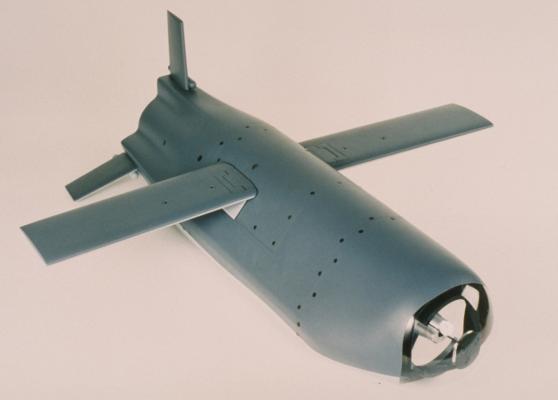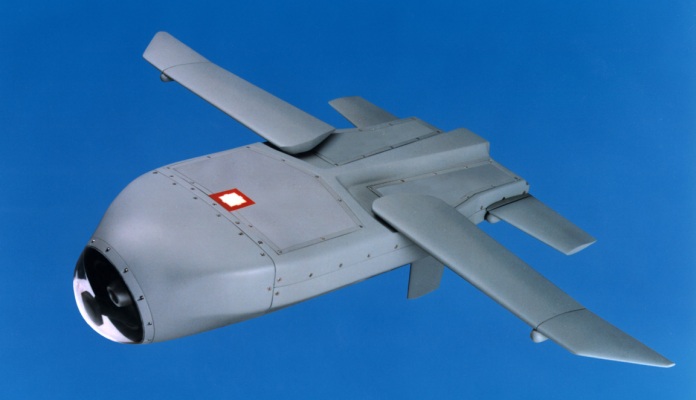Lockheed Martin LOCAAS
The LOCAAS (Low-Cost Autonomous Attack System) program had its origins in the mid-1990s, when it was started as the Low-Cost Anti-Armour Submunition intended for B-1 and B-2 bombers. The acronym was changed to its current meaning early in the program, when LOCAAS was redefined as a general-purpose weapon. Originally both an unpowered glide variant and a powered version (sometimes called P-LOCAAS; P = Powered) were planned. The first flight tests of both variants occurred in 1997, but the unpowered version has apparently been abandoned since. In late 1998, the Air Force Research Lab awarded a multi-year ATD (Advanced Technology Demonstration) contract to Lockheed Martin for further development of LOCAAS.
 |
| Photo: Lockheed Martin |
| LOCAAS (initial design) |
LOCAAS is an air-launched munition powered by a small turbojet. During the test program, different powerplants were evaluated, including the Hamilton Sundstrand TJ-50 and the Technical Directions Inc. TDI-J45G. The control surfaces of the current LOCAAS airframe include flip-out wings and three tail surfaces with a ventral vertical fin (the layout has changed somewhat since the initial design). LOCAAS is equipped with a GPS-aided inertial navigation system for autonomous waypoint navigation, and a LADAR (Laser Detection and Ranging) seeker coupled with a target recognition system. Thus equipped, LOCAAS can loiter at about 230 m (750 ft) altitude in a predesignated area for about 30 minutes to detect and destroy a target with a predefined signature. The weapon's high-explosive warhead consists of a multimode EFP (Explosively Formed Projectile), which can be detonated in several ways (multiple fragments, a penetrator rod, or an aero-stable slug) depending on the hardness of the target. LOCAAS can be air-delivered in SUU-64/B-based WCMDs (Wind-Corrected Munition Dispensers), from external stores racks, or from internal weapons bays. Ground launch as payload of an MGM-140 ATACMS missile is also feasible.
 |
| Photo: Lockheed Martin |
| LOCAAS |
After testing components like airframe, flight control system and LADAR seeker for several years, the first all-up test of a the current LOCAAS version, including autonomous search and destruction of a target, was performed successfully in March 2003. Because a fully autonomous attack mission without the option of operator intervention is undesirable in many tactical situations, Lockheed Martin has since added a two-way satellite link to the LOCAAS system to allow for a "man-in-the-loop". At the time of this writing, a decision to procure LOCAAS for operational service is still pending.
Specifications
Note: Data given by several sources show slight variations. Figures given below may therefore be inaccurate!
Data for LOCAAS:
| Length | 0.79 m (2 ft 7.25 in) |
| Wingspan | 1.18 m (3 ft 10.5 in) |
| Weight | 45 kg (100 lb) |
| Speed | 370 km/h (200 knots) |
| Range | > 160 km (100 nm) |
| Endurance | 30 min. |
| Propulsion | Technical Directions Inc. TDI-J45G turbojet; 133 N (30 lb) |
| Warhead | 7.7 kg (17 lb) multimode high-explosive |
Main Sources
[1] Kenneth Munson (ed.): "Jane's Unmanned Aerial Vehicles and Targets, Issue 15", Jane's, 2000
[2] GlobalSecurity.org Website
[3] Lockheed Martin Missiles and Fire Control Website
Back to Directory of U.S. Military Rockets and Missiles, Appendix 4
Last Updated: 17 September 2006